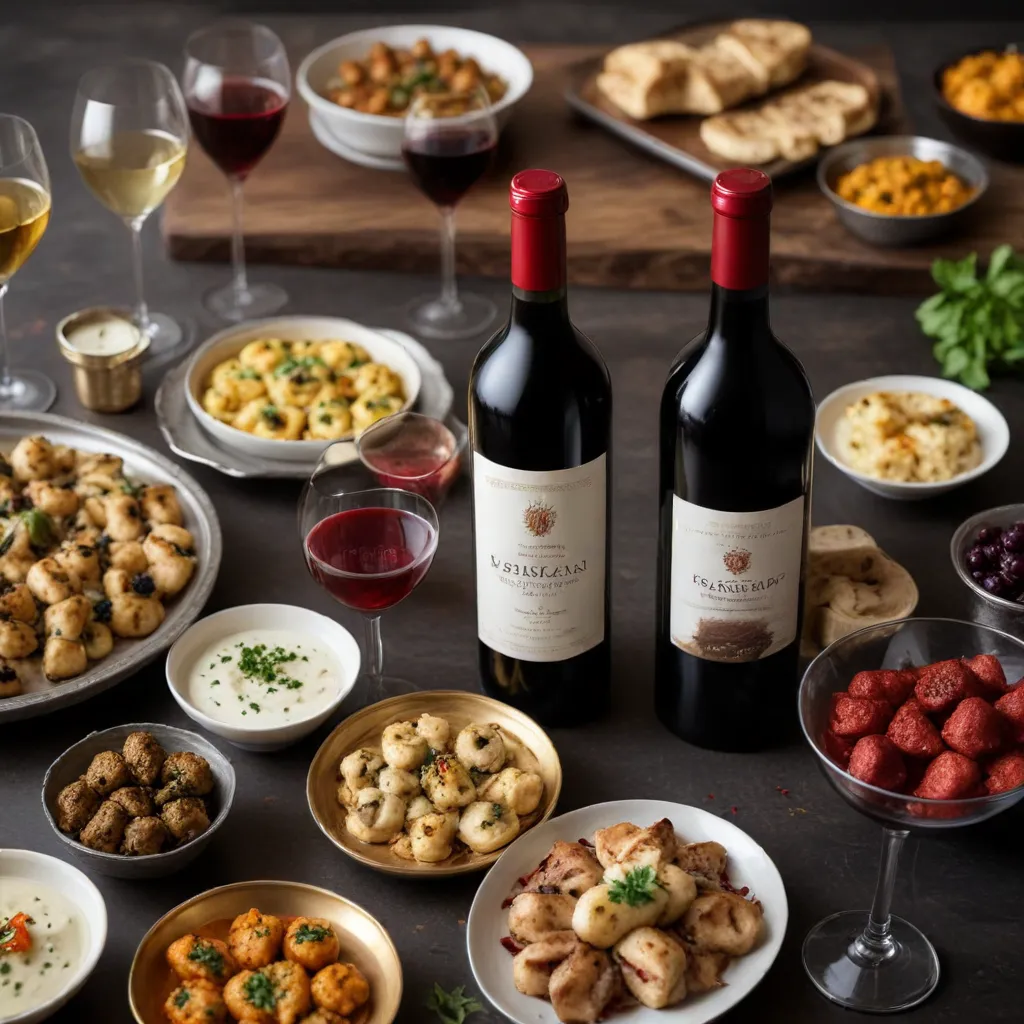
The vibrant flavors and aromatic spices of Indian cuisine present an intriguing challenge for wine enthusiasts and culinary experts alike. With its complex blend of sweet, sour, and umami notes, Indian food can seem daunting to pair with the nuanced profiles of wine. However, by understanding the key principles of food and wine pairing, you can unlock a world of delicious possibilities and elevate your dining experience to new heights.
Wine Pairing Considerations
Varietal Characteristics
When exploring the world of Indian-inspired cuisine, it’s important to consider the unique varietal characteristics of various wine styles. Lighter, more delicate whites like Riesling or Gewürztraminer can provide a refreshing counterpoint to the bold spices, complementing the dish’s flavors without overpowering them. On the other hand, medium-bodied Pinot Noir or Tempranillo offer enough structure to stand up to the complexity of Indian fare, while the pronounced acidity of Sauvignon Blanc can help cut through the richness of creamy curries.
Flavor Profiles
The secret to successful pairing lies in identifying the dominant flavors in both the food and the wine. Indian dishes often feature a harmonious blend of sweet, sour, and savory elements, with distinct spice blends like garam masala, curry powder, or ginger-garlic pastes playing a central role. Wines with corresponding flavor profiles, such as those with ripe fruit notes, subtle sweetness, or herbaceous undertones, can create a delightful synergy on the palate.
Regional Nuances
Just as Indian cuisine encompasses a diverse array of regional specialties, the wines of India and surrounding regions also offer unique characteristics worth exploring. Explore the bold, aromatic reds of Nashik or the crisp, mineral-driven whites of Himachal Pradesh to discover pairings that celebrate the local terroir and culinary traditions.
Navigating the Flavors of Indian Cuisine
Spice Blends
The foundation of Indian cuisine lies in its complex spice blends, which can range from the warm, earthy notes of cumin and coriander to the fiery kick of chili peppers. Understanding the interplay of these spices, and how they can either enhance or clash with certain wine profiles, is key to unlocking successful pairings.
Cooking Techniques
The diverse cooking methods employed in Indian kitchens, from tandoor-grilled meats to slow-simmered curries, also play a role in the flavor development of the dishes. Pairing wines that can stand up to the rich, robust flavors of slow-cooked dishes or the charred, smoky notes of grilled fare can create a harmonious dining experience.
Regional Specialties
Exploring the vast and diverse regions of the Indian subcontinent can uncover a wealth of culinary treasures, each with its own unique flavor profiles. From the fragrant biryani dishes of the north to the coconut-based curries of the south, understanding the nuances of these regional specialties can unlock new wine pairing possibilities.
Pairing Principles
Complementary Flavors
When pairing wine with Indian cuisine, the key is to seek out flavors that complement and enhance one another. For example, the bright, citrusy notes of Sauvignon Blanc can beautifully balance the assertive spices of a chicken tikka masala, while the ripe, berry-forward character of Zinfandel can amplify the warming spices of a lamb rogan josh.
Balancing Acidity
The robust, complex flavors of Indian food can sometimes overwhelm more delicate wines. However, by selecting wines with sufficient acidity, you can create a harmonious balance that cleanses the palate and prepares it for the next delectable bite. Look to crisp, high-acid whites like Albariño or lighter-bodied reds with good tannin structure to achieve this balance.
Mitigating Spice
For dishes with a fiery kick, consider pairing with wines that can help tame the heat. Off-dry styles like Riesling or Gewürztraminer can provide a refreshing counterpoint, while the residual sugar in these wines can help balance the spiciness. Alternatively, you can also explore high-alcohol, full-bodied reds, which can provide a warming sensation that complements the piquant flavors.
Mastering the Art of Pairing
Tasting Experimentation
The key to mastering the art of pairing wine with Indian cuisine lies in experimentation. Embark on a tasting journey, exploring a variety of wine styles and regional specialties, to discover the combinations that most delight your palate. Be open to trying unexpected pairings, as the interplay of flavors can sometimes surprise and delight.
Flavor Compatibility
When contemplating a pairing, consider the dominant flavors in both the dish and the wine, and how they might interact on the palate. Look for elements that can either complement or contrast with one another, creating a harmonious balance of tastes and textures.
Presentation Techniques
To elevate the dining experience, pay attention to the visual presentation of your wine and food pairings. Arrange the dishes artfully, using vibrant colors and interesting textures to create an inviting tableau. Complement the visual appeal with thoughtful glassware selection and proper decanting techniques to showcase the wine’s nuanced aromas and flavors.
Unlocking the secrets of pairing wine with Indian-inspired cuisine is a journey of discovery, filled with countless delicious possibilities. By understanding the key principles of flavor compatibility, acidity balance, and spice mitigation, you can craft pairings that not only tantalize the taste buds but also elevate the entire dining experience. So, don your culinary explorer’s hat, uncork a bottle of your favorite varietal, and embark on a flavorful adventure that will leave you and your guests craving more. Visit www.winegardeninn.com to explore our curated selection of wines and Indian-inspired recipes that are sure to delight your palate.
